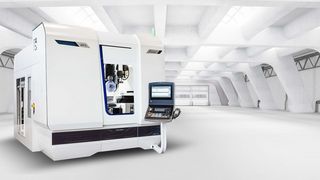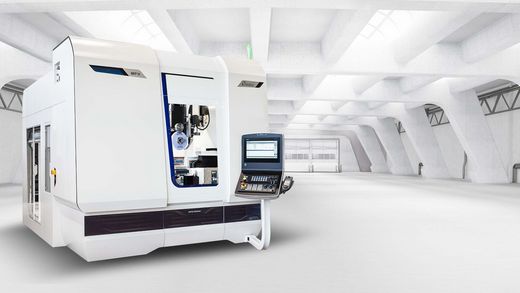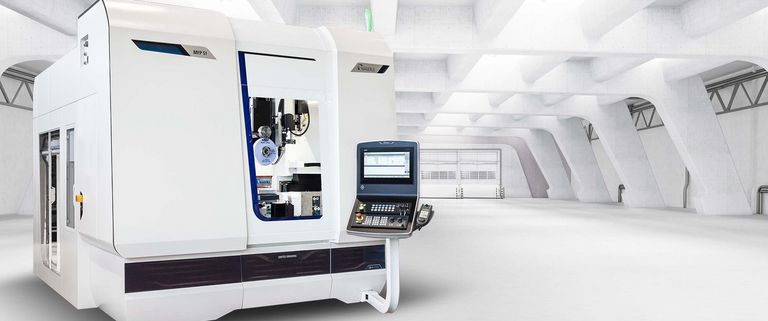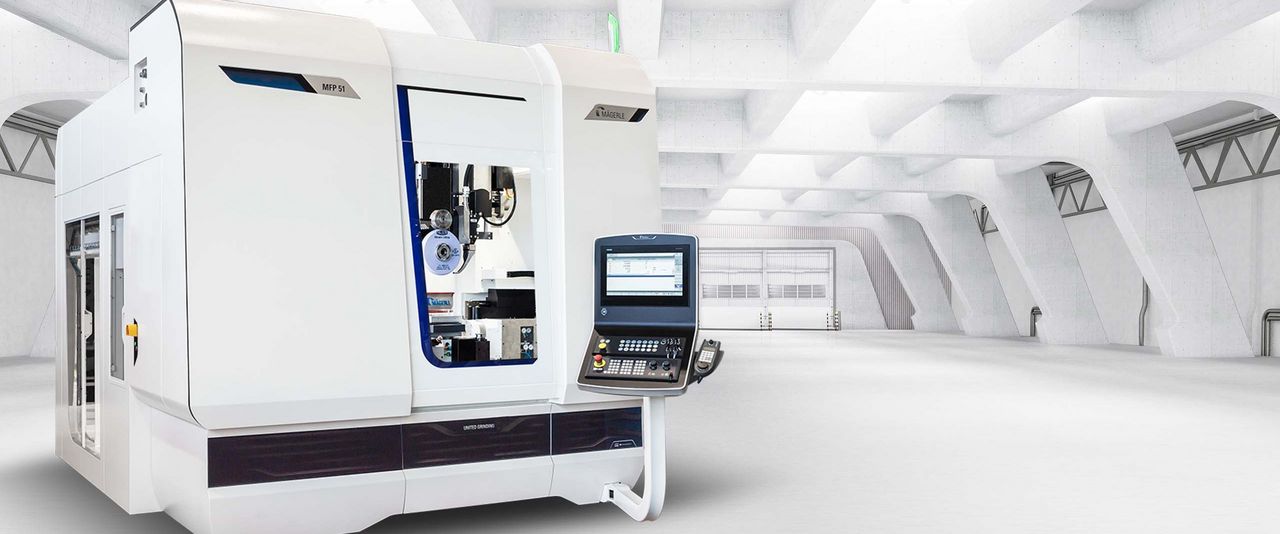High-mix/low-volume production on 5/6 axis grinding centers
The principles of high-mix/low-volume manufacturing as a successful growth strategy were primarily developed and implemented in Japan in the early 1980s. The focus is on the customer, who expects a product to be delivered in a short time at a low price and of high quality. A well-functioning production with a wide range of variants and small quantities requires a high product diversity, low costs and short response times. When it comes to manufacturing high-precision parts for industries such as aerospace or medical technology, grinding remains the best and most cost-effective way to achieve high surface qualities and tight tolerances. And to ensure that their customers have the application flexibility and machining performance needed for successful high- mix/low-volume production, UNITED GRINDING integrates numerous processes and technologies into individual machine platforms.
In classic manufacturing processes, the production of complex workpieces usually requires multiple machining technologies running across several machines. In a production organized in this way, there are buffers of workpieces at each machine, increasing throughput times and production inventory (WIP), and when a workpiece is changed, all machines in the line must be retooled. Well-known methods such as value stream mapping, lean and 5S can optimize but not eliminate unplanned equipment downtimes, high set-up costs and inventories.
By integrating a wide range of technologies into the MFP 51, MÄGERLE has enabled maximum flexibility to achieve high productivity on surface and profile grinding machines. In addition to the full range of surface and profile grinding operations, the MFP 51 also offers the option of drilling, milling and measuring in a single clamping, always with full five-axis functionality. An operator can perform the work of an entire four-machine cell on an MFP 51 without the risk of workpiece damage between machines or inaccurate setup resulting in rejects. In addition to this, reduced or eliminated set-up times lead to significant upstream and downstream savings across entire production lines.
The tool magazine with optional tool recognition using RFID and the quick-change pallets enable fast changeovers during production.
Many companies are forced to work intensively on implementing high-mix/low-volume production, as the need for small batch quantities has increased exponentially for years. Classic production lines are not efficient for small batch sizes with a long changeover time, especially if a large variety of workpieces is to be produced. Productivity and cost-saving potential can be exploited by integrating several processing steps into one clamping, in particular by simplifying and actively controlling production processes.










